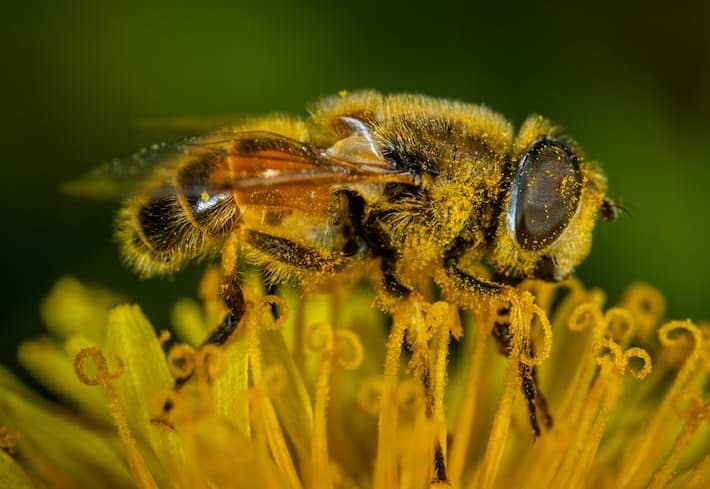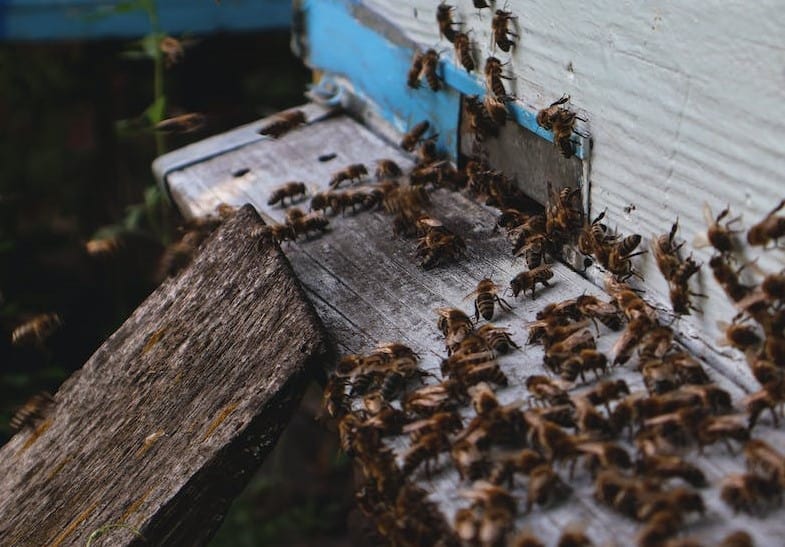We bet you would have heard the joke already. But we are sharing it yet again in case somebody out there hasn’t. Why do bees have sticky hair? Because they use honeycombs!
That may be a classic joke, but the same question has bewildered some people who are just curious about bees.
There is just so much about the bee anatomy that amazes us!
But it’s time to delete that one from your list of pressing questions about bees and beekeeping.

Most Bees have Sticky Hair, Seriously!
The reality beyond that joking question is that bees do have sticky hair. Nature made them that way in support of their roles of pollinating flowers and collecting pollen to feed their larvae.
Besides being in support of their sustenance, the hairs on the bodies of bees also aid in their survival.
FUN FACT: Although nobody bothered to count, bees are believed to have millions of hairs on their bodies.
Collect Pollen
Bees use their hair to collect pollen and transport it back to their hives to feed their larvae. As the bee lands on a flower and takes its fill of nectars, pollen sticks to the bee’s body through its hairs.
Pollens that stick to the hairs get tangled and carried back to the hive. In there, the bee would shake it off and use it to feed its larvae.

Regulate Body Temperature
The bees’ hairs also serve to regulate their body temperature. In the case of bees, the hair on their bodies serves as an additional outer covering that protects them from the cold.
Of course, they do not merely rely on these body hairs to keep them warm. They also rely on each other.
As with honey bees in the winter, they create a winter cluster by huddling together to generate body heat. It helps these honey bees stay warm throughout the winter season.
Detect Other Signals
A bee’s hair is also believed to have the ability to detect vibrations in the air that signal the bee of occurring events around it. It helps them sense an incoming threat. This surely makes up for the bee’s lack of ears to aid their hearing.
Additionally, some bees mark their territories with pheromones. The hair on the bodies of the bees can pick up chemical signals from these marks, signaling the bees not to wander into another bee’s territory.
Finally, the hairs can detect and interpret the wind current and direction, telling the bees where to find a flower with lots of nectar and pollen.

Branches on Hair
Bees’ hairs are branched, meaning they are like stems with small branches on them. Nature designed them this way to help them with their functions.
As a bee visits a flower, pollen easily attaches and gets lodged within the branches of the hair. The branches would make it hard for the pollen to get dislodged.
While there are other ways of bringing pollen back to the hives, this mechanism definitely helps a bee accomplish more.
Do Bees Have Hairs on Their Eyes?

Not all bees have hair on their eyes. Of the more than 20,000 bee species, only the honeybees were observed to have some hairs on their eyes.
Just like the other hair on the body of a bee, the hairs on a bee’s eyes can also detect signals on the direction of the wind and the location of flowers to gather nectar from.
Other bees are not born with hairy bodies and legs. As some bees merely forage to satisfy their need to survive, nature did not see the need to gift these foraging bees with sticky hair.
Final Thoughts
Hair or no hair, bees are just as industrious in pollinating flowers that benefit our ecosystem.
Be it a honey bee, bumble bee, sweat bee, leafcutter bee, or any other bee species, they all contribute to balancing the ecosystem so we have a better environment!
